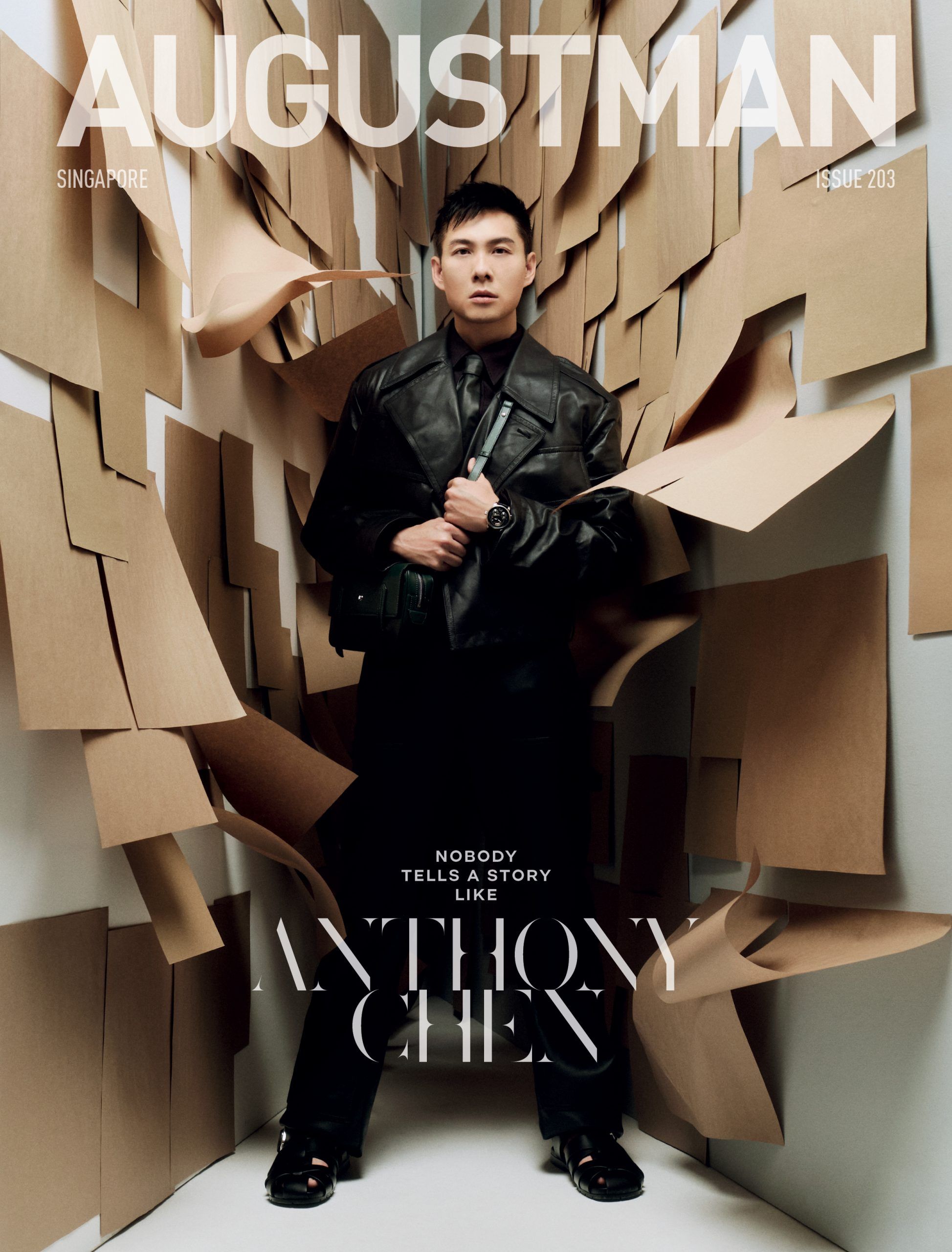When Joseph Krug founded the House of Krug in 1843, his dream was to offer the fullest expression of Champagne every year, regardless of variations in climate. six generations on, Olivier Krug, the Director of the House welcomes Krug Lovers from around the world to experience the House’s savoir faire – Paying close attention to the vineyard’s character, respecting the individuality of each and every one of its 300 plots and its wine, as well as building an extensive library of reserve wines from many different years have allowed Joseph’s great great great grand descendant to perpetuate the Krug legacy.
Judy Cavill said it’s easy to make good champagne when the year is beautiful but you have to be creative when the year is not so good. What does that creativity mean at Krug?
Usually good champagne is made when the year is good but Josef Krug’s dream was to have great champagne every year. He understood that he that in theory, a good year every year is impossible so he didn’t the create something that didn’t exist. At Krug, that is our challenge every year.

Sometimes when it’s a good year, it’s even more challenging. Our Krug Grande Cuvee 68th edition came from an outstanding year but for this edition there 198 different elements which means each component added up to less than 0.5% and if you think about it, from 11 or 12 different years with a very high proportion of reserve wines. Most people would think that with a good year, you don’t need a high proportion of reserve wines because usually in champagnes, you use reserve wines to hide what is missing. At Krug, we bring what is missing even in a good year. A good year can bring full body, richness, density, charismatic but you need a little finesse. This is why we use musical analogies. My favourite example comes from my father, 34 years ago when he said that my role is to be a conductor and to put on stage the musicians. I may have a year like 2008 where all the musicians are the best in class and all would qualify for the Berlin Philharmonic Orchestra but I don’t need only the best in class because I don’t want my orchestra to be classic. I need a bit of fun, I may need trumpets and drums or the triangle – I may need the best for key instruments and ingredients where the resonance is pure. I may audition five in 2008, only use one and keep four in reserve and in a year like 2012, I can call one of them back to counter the richness. Long story short, whatever the year, we need everyone and sometimes in the year, I may not have everyone.
The 164th edition was birthed in 2008, a good year and if people said that this edition of the Grand Cuvee was better, the cellar master would be fired [laughs] because no one is supposed to say that one bottle of Krug is better than another edition. There may be specific flavour profiles that appeal to you more because of your preferences but they’re all good. At Krug, we sometimes have blind tastings and we recreated the 157th edition from 2001 – it was the worst year of the last 30 years but in blind tastings, it is often the one people mistake for “a good year” – yes, it’s a good year, every year is a good year for Grande Cuvee. [laughs]

You raised a good point – every year is a good year but competing champagnes who have vintages which are clearly better than the others. However, at the tasting yesterday, one of the common observations was the 171th edition was not as dry as other vintages, does Krug have a house style?
No, I think the keyword is generosity. It is the keyword that Julie aims to create each year, the most generous music of champagne so she needs everything: zesty character, lemon with more fruit, a bit of spice, yeast, she needs everything. This is very interesting because on an edition of Krug Grande Cuvee would not reflect a year, it will always give you everything but sometimes, this “everything” was easier in terms of finesse or richness as with the case of the 171st edition. Wine critics are often surprised when they taste an edition made in 2015, a rich year, to discover a fresh and elegant bottle.
Every bottle of Grande Cuvee is very individual and that’s why you have the ID system, you mentioned that 0.5% of your many reserves into it, is there truly no distinct house style you’re looking for? What is unique signifier of a Krug?
Generosity is what makes a difference. Some people will tell you that the style of my champagne is elegance, so every year, they’re obsessed with elegance. Others will tell you that my style is about opulence, pinot noir, roundness and fruit and every time, you recognise that’s a signature of the house. Krug is a house that gives you all of that. When we had the 171st edition last night, there was 90 minutes from when the time we arrived until our guests arrived and by then it was not as cold as when it was opened but all of you still got the freshness and the fruity and the citrus even as the champagne got warmer in your hand. Everyone has different words to describe a Grande Cuvee and everyone is right because there is something for everyone. Julie describes a bottle of Grande Cuvee like a breakfast tray with all the elements of breakfast, orange and apple juice, croissants, coffee and smokiness form the tea and there’s no other wine in the world that gives you so much from one sip.

You have a very good following on Instagram for a vintner, why do you think you have amassed such a following on social media?
At Krug, we don’t think of our audience as consumers. There’s a very strong emotional belonging for Krug lovers and so they like to be part of the family to know what is happening in the family of Krug. They often private message me when they have a very old bottle because the data is not in the app past a certain year.
Tell us more about the ID system.
We developed in 12 years ago. Krug used to be a very secretive house, [whispers] we make a great champagne but let’s not tell everyone because we don’t make enough. We were the anti-prestige Cuvee, we didn’t want everyone to know, we only cared about our friends. We were very shy. Eventually, this became perceived as a kind of arrogance despite the fact that we were trying to be modest. Then, we had a new CEO and she encouraged us to talk about what we do. I was resistant at first. She said, “but Olivier, people think it takes four years to make a Grande Cuvee but it takes 20 years. You have nothing to hide.”
Overnight, we made the Krug ID system. When we debuted the system, an American champagne critic wrote that: Overnight, Krug has become the benchmark of transparency. Almost everything people want to know about Krug is available in the app.

Does Julie’s mood affect a vintage that she’s preparing for a particular year?
There’s no space for emotion that on the testing committee because you require so much concentration. Julie works with six others including myself and its teamwork. Every morning, we blind test 15 different samples from 11am to 12pm. We test, we make notes and Julie uses an app named for an old journal we called the Black Book and then we put our ratings on it, 20 points based on six criteria, the same as everyone. There are disagreements of course and we are trying 15 wines in an hour, with only three to four minutes spent on each reserve, so it’s very hard to get emotions in.
Maybe you had the wrong call five minutes before the tasting, it can happen but in the middle of tasting, we have inappropriate jokes that tend to diffuse the entire situation. It’s a pressure release valve for us but its very much teamwork. We test up to 300 wines because we have 300 plots and we could test everything in three to five months. Testing the wines twice accounts for 600 tastings across 40 days, over 4000 tasting notes, mood is just not one of the criteria.
In Asia we don’t know what a “gooseberry” is, is there a diversity on your tasting committee to contribute to the wealth of tasting notes?
Out of the seven, we have a diversity of gender, three men and four women and a diversity in age – the youngest being 25 and the oldest being Eric Lavelle who is 61. Its true that we don’t have people from all over the world but the honest truth is that these positions are very long term positions for years – Julie has been with us for 14 years, we can’t just hire. It’s about the experience, if a cellar master leaves, it’s going to be hard to fill. Isabelle, our youngest member has Vietnamese parents. Though there are more male sommeliers, the best ones tend to be women.

How often does it happen that a Krug Ambassador is someone pre-famous?
Usually I recommend Ambassades (Ambassador) from someone outside of the key accounts. Conventional wisdom is that you pick ambassadors from the biggest distributers of your wine but the fact is that it is a big account because it sells a lot of champagne in general without a focus on Krug.
If you go to a place like Hashida, Hashida-san doesn’t have a sommelier, he’s a fan of Krug himself and recommending each vintage according to his day’s omakase curation. Hashida-san was actually recommended to me by a Singaporean living in Australia. You don’t have to be big but you have to have good taste, you might not have any Michelin Stars, you might not even be in the top 50 but you’re going to be someday because you already love Krug and that says a lot about taste. [laughs]
Krug is very expensive and it also means that you need the right clientele to sell it and chances are, you already have a lot of criteria ticked and that’s a natural progression if I had to invest in someone.

How do you choose a single ingredient and why is it such an important aspect of Krug’s storytelling?
We pick an ingredient that you can find anywhere in the world because Krug is global. It’s not easy because they’re not always in season and there are marketing constraints because the ingredient has to look appealing also [laughs] – the potato was fun to market. Key internal members of the board from key markets then vote on the ingredient. They make their choice based on how the ingredient will connect with the market and how it helps us tell the Krug story. We cannot stop promoting Krug otherwise we will end up in the museum, we hold back a small reserve of bottles because these are used for recruitment, entertaining and to perpetuate the Krug story with these ingredients.
Music is also another way we tell the story and its fantastic because its a universal language and we have worked with the greatest artists in the world. It’s a precise analogy of how we produce our champagnes as well. At Krug, we have an extra mission beyond business, we believe that music can bring goodness to the world and contribute to science.





